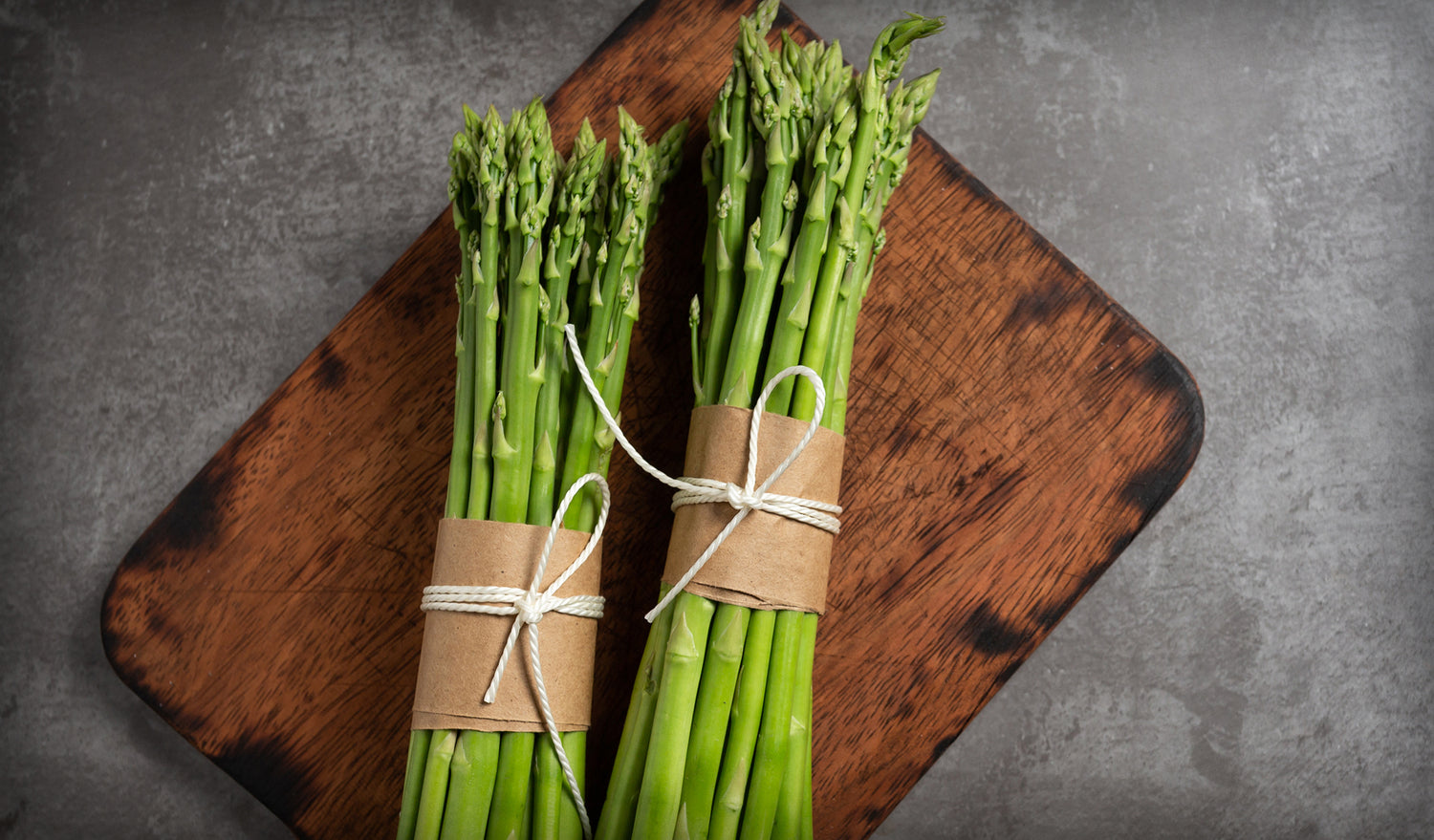I HAVE A FLAT TIRE, I SHOULD HAVE BROUGHT ASPARAGUS (a spare i guess… GET IT..!)
Asparagus is a member of the lily family. Native to the Mediterranean, asparagus is now grown all over the world. Surprisingly there are about 300 varieties of asparagus, but only 20 are edible. Asparagus has fleshy spears topped with bud-like, compact heads. It is usually harvested in the spring when it is 6 to 8 inches tall. Normally green or greenish purple in color, white asparagus is grown underground to inhibit its development of chlorophyll content in order to provide a more delicate flavor and color for a unique culinary experience.
HISTORY
Asparagus originated in the eastern Mediterranean region, as well as in northern and southern Africa. There is evidence that it was first cultivated in ancient Egypt, where it was prized not only as a food but also for its medicinal properties. Today, asparagus is cultivated in most sub-tropical and temperate parts of the world, with the majority of commercially available asparagus grown in the United States, Mexico, Peru, France, Spain and other Mediterranean countries.
NUTRITIONAL HIGHLIGHTS
Asparagus is low in calories and carbohydrates, but relatively rich in protein compared to other vegetables. One cup of asparagus supplies only 24 calories, almost half of which are derived from protein. Asparagus is an excellent source of potassium, vitamin K, folic acid, vitamin C and A, riboflavin, and vitamin B6; and it has an excellent ratio of potassium to sodium. Asparagus is also a very good source of dietary fiber, niacin, phosphorus, protein, and iron.
Asparagus has historically been used in the treatment of arthritis and rheumatism, and as a diuretic. The diuretic effect of asparagus may be due to the amino acid asparagine, which when excreted in the urine gives off a strong, characteristic odor. The benefit in arthritis may be the result of recently identified unique phytochemical antioxidants (racemofuran, asparagamine A, and racemosol) as well as inhibitors of the COX-2 enzyme, which produces inflammatory compounds.
BENEFITS
- Good Source of Vitamin K - Asparagus is high in vitamin K, which is the primary blood clotting vitamin. Many studies have found that vitamin K can also improve our bone health, since it works with vitamin D to facilitate bone mineralization, cell growth and tissue renewal.
- Contains Anti-inflammatory and Antioxidant Properties - Asparagus nutrition is full of anti-inflammatory and antioxidant properties that help to reduce common chronic health problems, including type 2 diabetes, heart disease and certain types of cancer.
- Serves as a Natural Diuretic - Something that makes asparagus nutrition unique is that this veggie contains chemicals that make it act as a natural diuretic, which means asparagus promotes the production of urine and can help fight bloating. This increases the excretion of water from the body, in particular ridding the body of excess salt and fluid.
- Nourishes the Digestive Tract - Asparagus nutrition contains prebiotic compounds and significant amounts of the nutrient inulin, which does not break down in our digestive systems, but passes undigested to our large intestines where it becomes a food source for good and healthy bacteria. Having enough “good bacteria” in your gut is linked with enhanced nutrient absorption, a lower risk of allergies, and a lower risk of colon and pancreatic cancer, among other health benefits.
- Good Source of Fiber - Eating low-carb vegetables like asparagus is a great way to obtain enough fiber, which is digested slowly and keeps you feeling full, without consuming excess calories. One serving of asparagus contains more than a gram of soluble fiber, which has been shown to lower our risk of heart disease.
- Helps Fight Cancer - One of the most important asparagus benefits for men is that extracts derived from asparagus have been found to help defend against prostate cancer. Certain studies suggest that extract of Asparagus laricinus exhibits selective cytotoxicity on cancer cells but not on non-cancerous cells. Another surprising aspect about asparagus nutrition is that it’s rich in glutathione, a detoxifying compound that can help destroy carcinogens. Researchers believe glutathione is so pivotal to our health that the levels in our cells are becoming a predictor of how long we will live.
-
Supports Skin Health - Asparagus benefits for skin include protecting against sun damage and even potentially skin cancer. This is due to the presence of vitamin A and various antioxidants.
SELECTION & STORAGE
The best quality asparagus is firm and the tips are closed. In general, the darker the stock the higher the concentration of nutrients. Once trimmed and cooked, asparagus loses about half its total weight, so buy about 1/2 pound per person when purchasing asparagus for use as part of a main dish.
Asparagus is perishable and loses many nutrients as well as its flavor, if it is not used within a day or two after purchasing. To maintain freshness as long as possible, store in the refrigerator with the ends wrapped in a damp paper towel.
LET'S EAT
Asparagus is most often prepared by lightly steaming the entire spear, or cutting the spear diagonally and stir frying. Snap off the tough stem ends of the asparagus by holding a spear in both hands and bending; it will break where the tender and tough parts meet. Be sure to wash asparagus under cold water to remove any sand or soil residues before cooking.
Avoid cooking asparagus in an iron pot, as the tannins in the asparagus can react with the iron and cause the stocks to become discolored. After cooking, asparagus can be served hot or cold. If your recipe calls for cold asparagus, plunge the stocks into cold water immediately after cooking, then remove them quickly; letting them soak too long can cause them to become soggy.
Roasting asparagus is another simple and flavorful technique. Simply mix asparagus with an oil or oil-based vinaigrette and your favorite herbs and spices. Place it in a roasting dish and bake at 400°F for 10 minutes. If other vegetables are added, be sure that they cook quickly or are thinly sliced, given the short cooking time of this dish.
RESOURCES
- Dr. Axe



